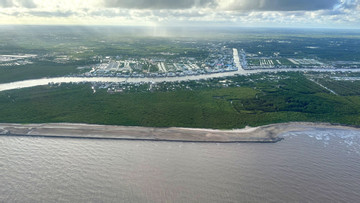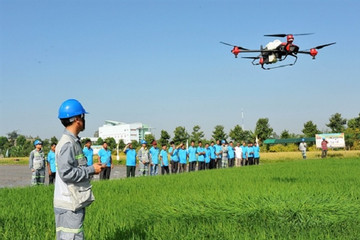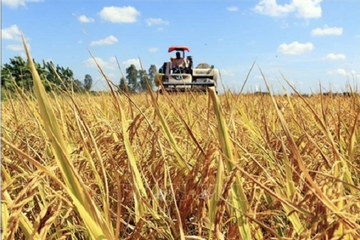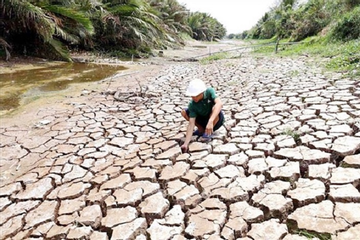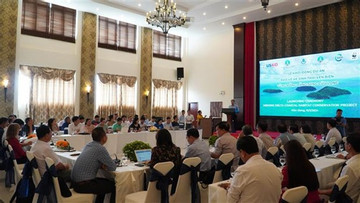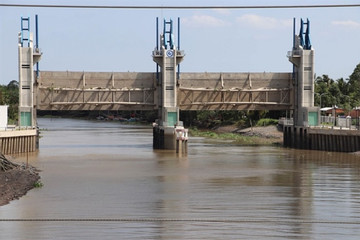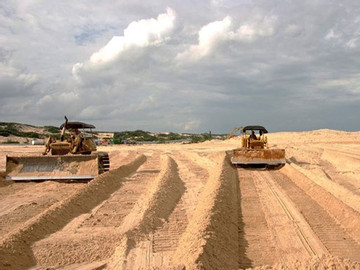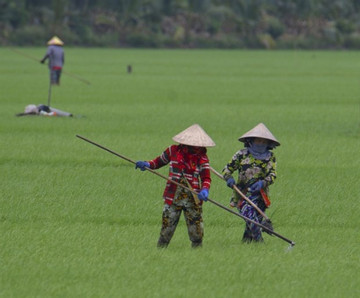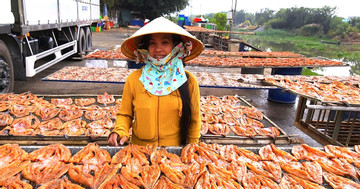- © Copyright of Vietnamnet Global.
- Tel: 024 3772 7988 Fax: (024) 37722734
- Email: [email protected]
mekong delta
Update news mekong delta
About 385 million USD needed to upgrade three national highways in Mekong Delta
The Department for Roads of Vietnam has proposed a project worth nearly 9.3 trillion VND (385 million USD) to upgrade and innovate parts of three national highways – No 53, No 62 ,and No 91B – in the Mekong Delta.
Mekong Delta faces freshwater shortage
The salinization and scarcity of fresh water is expected to cause severe damage to the local farmers in the Mekong Delta region.
Mekong Delta moving to navigate drought, saltwater intrusion
The Mekong Delta is the largest area for rice, fruit and fisheries production in Vietnam but has also been hit hard by climate change.
Digital transformation is the new buzz on rice fields
The Mekong Delta is witnessing a continuous digital transformation revolution in agriculture, unfolding every day and every hour.
Over 1mil. to be trained for massive high-quality, low-emission rice project
The second phase of the project between 2024 and 2030 is set to train public personnel involved in farming promotion work within communities, technical and managerial personnel of 620 participating cooperatives and cooperative groups, and farmers.
Drought & salinity damages result in $2.82bil. in agricultural losses
Scientists from the Institute of Water Resources recently conducted a study to assess the damages caused by saline intrusion in the Mekong Delta region.
Authorities mulling over options to alleviate saline intrusion in Mekong Delta
The phenomena are reaching their peak in the dry season this year, according to the Ministry of Agriculture and Development.
USAID-funded coastal habitat conservation in Mekong Delta kicked start
A project funded by the US Agency for International Development (USAID) to conserve coastal habitat in the Mekong Delta region was launched at a ceremony in Kien Giang on March 15.
Saltwater intrusion threatens Mekong Delta rice crop
Saltwater intrusion up rivers is estimated to affect 29,260ha of rice sown in areas not zoned for the crop in the Mekong Delta as the region enters the peak dry season.
PM urges action against sand shortage for Mekong Delta infrastructure projects
Prime Minister Pham Minh Chinh directed ministries, agencies, and localities to address challenges hindering the timely supply of materials, particularly sand, for infrastructure projects in the Mekong Delta.
Mekong Delta residents eagerly await new highways
Poor infrastructure was once a weak point in the Mekong Delta, making it impossible to connect with other areas in the southern region, and hindering investment.
Farmer in Mekong Delta succeeds in exporting lemongrass
This is a promising new turning point for a very familiar plant often grown in the backyards of rural households in the Mekong Delta region.
WB, EU committed to sponsoring project of one million hectares
The World Bank (WB) and the European Union (EU) are committed to sponsoring the project of one million hectares of high-quality, low-carbon rice production associated with green growth in the Mekong Delta until 2030.
Mekong Delta urged to closely monitor saline intrusion forecasts in February
Provinces in the Mekong Delta, known as Việt Nam’s “rice bowl”, need to store fresh water to avoid localised drought.
Coordination necessary to develop one-million-hectare rice project in VN
Deputy PM Tran Luu Quang called for cooperation of the Government, localities and enterprises in implementing a project to sustainably develop one million hectares of high-quality rice associated with green growth in the Mekong Delta until 2030.
Comprehensive strategy needed to ensure water security in Mekong Delta: experts
The Mekong Delta is the largest rice production area in VN, but adverse impacts from natural and human-induced changes in the Mekong River have led to growing concerns over water security in the region.
Tet delicacies: Irresistible specialties from Mekong Delta region
Towards the end of the lunar year, the dried food craft villages in the Mekong Delta become vibrant, working at maximum capacity to meet the demand for the Tet market.
Netherlands, Australia help transform rice value chains in Mekong Delta
The project will be implemented from the Summer-Autumn crop in 2024, with funding of 16 million AUD (10.5 million USD) from the Australian Embassy in Vietnam.
Mekong Delta draws visitors to classic destinations
The Mekong Delta, one of the country's seven key tourism regions, has identified 53 classic destinations designated by the Mekong Delta Tourism Association.
Shrimp, pangasius farmers in Mekong Delta face risk of heavy losses
Shrimp and pangasius farmers in the Mekong Delta are grappling with the imminent threat of substantial losses.


